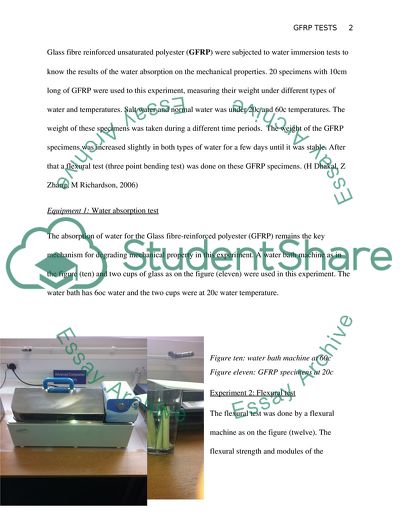Cite this document
(Water Absorption and Flexural Test for Glass Fibre Reinforced Polymer Case Study Example | Topics and Well Written Essays - 2250 words, n.d.)
Water Absorption and Flexural Test for Glass Fibre Reinforced Polymer Case Study Example | Topics and Well Written Essays - 2250 words. https://studentshare.org/design-technology/1773475-materialsexperiment-water-absorption-and-flexural-tests-experiment-for-a-glass-fiber-gfrp
Water Absorption and Flexural Test for Glass Fibre Reinforced Polymer Case Study Example | Topics and Well Written Essays - 2250 words. https://studentshare.org/design-technology/1773475-materialsexperiment-water-absorption-and-flexural-tests-experiment-for-a-glass-fiber-gfrp
(Water Absorption and Flexural Test for Glass Fibre Reinforced Polymer Case Study Example | Topics and Well Written Essays - 2250 Words)
Water Absorption and Flexural Test for Glass Fibre Reinforced Polymer Case Study Example | Topics and Well Written Essays - 2250 Words. https://studentshare.org/design-technology/1773475-materialsexperiment-water-absorption-and-flexural-tests-experiment-for-a-glass-fiber-gfrp.
Water Absorption and Flexural Test for Glass Fibre Reinforced Polymer Case Study Example | Topics and Well Written Essays - 2250 Words. https://studentshare.org/design-technology/1773475-materialsexperiment-water-absorption-and-flexural-tests-experiment-for-a-glass-fiber-gfrp.
“Water Absorption and Flexural Test for Glass Fibre Reinforced Polymer Case Study Example | Topics and Well Written Essays - 2250 Words”. https://studentshare.org/design-technology/1773475-materialsexperiment-water-absorption-and-flexural-tests-experiment-for-a-glass-fiber-gfrp.


